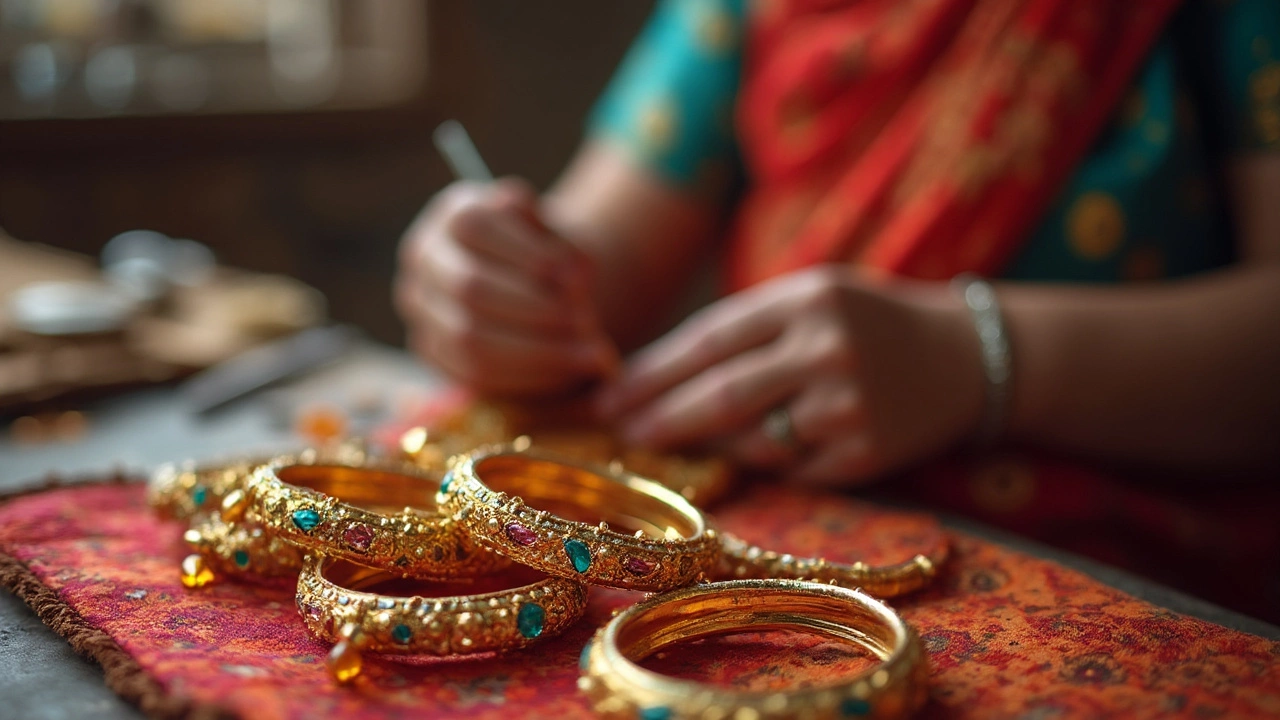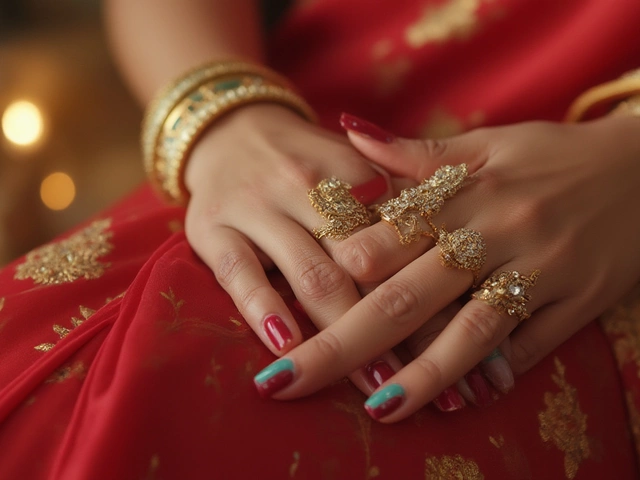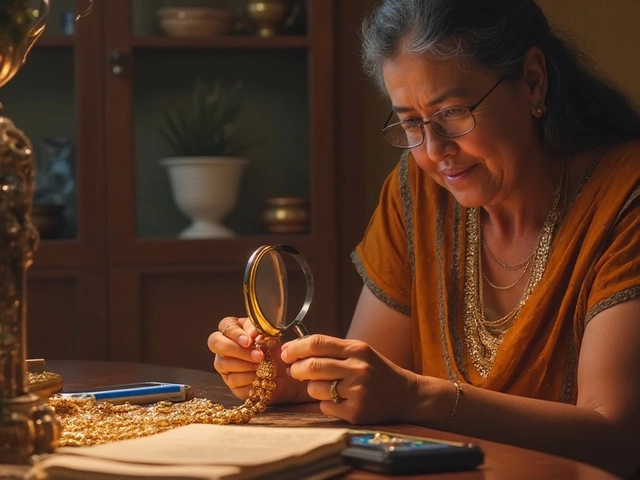You ever walk into a jewelry shop with your kid tugging at your sleeve, eyes fixed on those shining rows of bangles, and quietly gulp at the price tag? Yeah, me too. And it's not just at those posh stores in big malls—go to the local market or traditional fair, same thing. The cost of a single bangle can leave you wondering if it's plated with moon dust or something. The truth is, there's an iceberg of reasons why bangles are pricey, hidden beneath those tiny circles of art. Each one tells a story—history, sweat, emotion, and more than a little math.
The Real Price Tag: Materials and Craftsmanship
Bangles may look simple at first glance, but start digging and you'll see why their price can climb faster than Mumbai’s property rates. Materials matter a lot. Gold isn't just gold—pure gold is 24 karats, but it's way too soft for daily use. So, jewelers blend it with other metals to make it sturdy. Now, even 22K gold fetches a premium because of global gold prices, which seem to move up every time I blink. In 2024, gold shot up above $2,300 an ounce, beating nearly every savings account out there.
But let’s not stop with gold. Silver, platinum, even glass—all these raw materials have their own price graphs, driven by mining costs, international demand, and currency swings. It isn’t like your local jeweler can escape all this by making deals under the table. When I was buying tiny silver bangles for my daughter Pari’s birthday, the shopkeeper ran me through the new customs duty and GST. The taxes often jack up the base cost by 10% or more.
But hold on, materials aren’t everything. It's the hands and the eyes working on the bangle that transform it from a plain ring to a piece you’d hand down generations. Skilled artisans are a rare breed now, especially those who can create intricate meenakari (enamel work) or jadau (stone-inlay). Training takes years, and as younger folks drift to desk jobs, the old masters’ work gets even pricier. These craftspeople can spend hours on just a set, using tools that have barely changed in decades.
One bangle might pass through ten different hands before it reaches the showcase—someone shaping the base, another carving patterns, third adding stones. Misplace a tiny diamond? Someone’s gotta fix it. Mess up a motif? It’s back to square one. You’re not just paying for a sprinkle of gemstones or a gram of gold, but for the patience and expertise sandwiched between every shine and swirl. That’s why two bangles, looking similar at first, can have jaw-droppingly different price tags. One is machine-stamped in bulk. The other is a piece of living heritage, stitched together by real people—and you can honestly feel the difference.
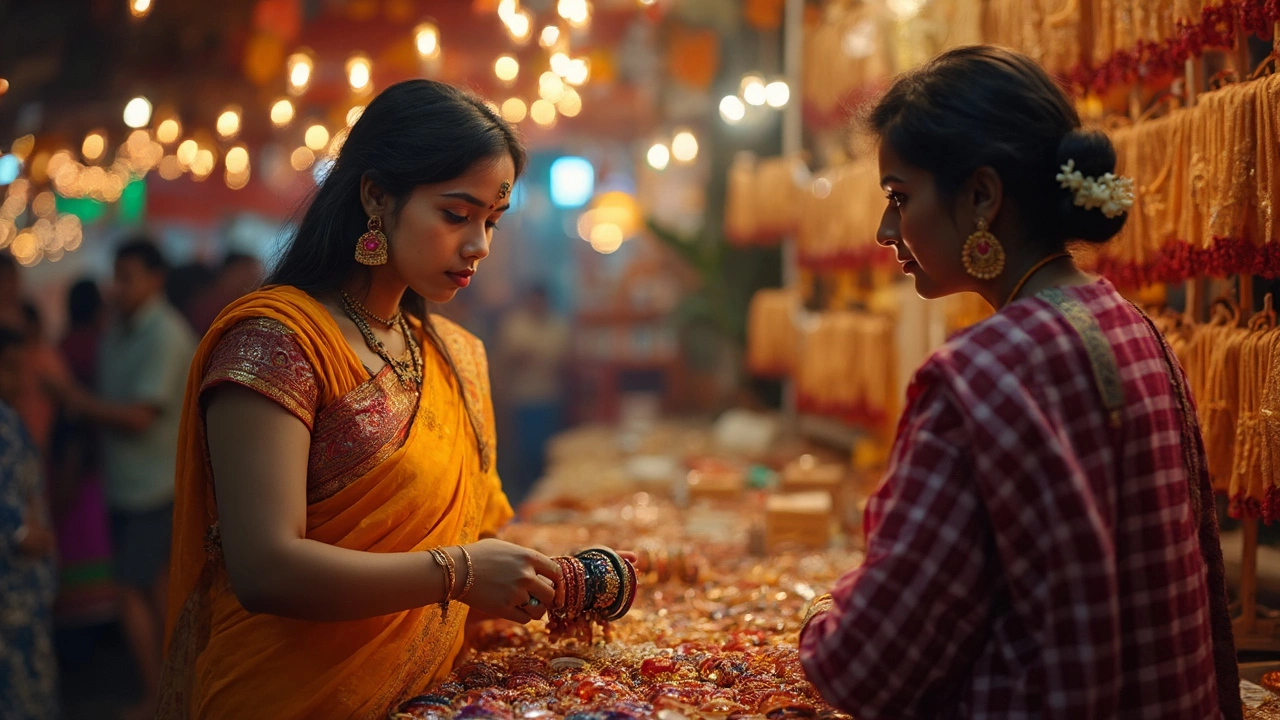
The Weight of Tradition and Emotion in Pricing
Walk into any Indian home, and there's at least one box of special bangles stashed away for "occasions." These aren't just jewelry—they're loaded with tradition. When I got married, my mom handed down gold kadas from her own mom, probably older than all the smartphones in our family put together. So, why does this matter for price? Because bangles aren’t just about the material—they’re about memory, culture, and belief, which cranks up demand and, yes, cost.
Certain styles carry a premium not because of what they're made of, but who made them and how they're worn. Take lac bangles from Rajasthan. These are made from a tree resin using local, age-old methods, and only a handful of families still know the craft. Or glass bangles from Hyderabad’s Laad Bazaar—each color, each shimmer, is a clue to its origins, and the price tag sometimes includes generations of know-how. Even simple glass bangles get expensive during wedding season or religious festivals because every family wants them, and there’s just no way to flood the market without cutting corners. Nobody wants cheap, machine-made fakes for their daughter’s wedding.
The emotional pull is strong, too. Take Valentine’s week (yes, even in India)—demand for designer bangles shoots up because young buyers see them as a showy yet safe gift. The market isn’t just for aunties anymore; trend-conscious teens and their buddies, armed with social media, want the latest looks. This means brands chase limited-edition designs, fueling a cycle of hype and price hikes. Don’t even start on Bollywood—if Alia Bhatt flaunts a bangle on-screen, expect to see copycat versions hit the markets at silly prices, as every fan wants in.
There’s also this thing about "auspiciousness." Red and green glass bangles are sold by weight during festivals like Teej or Karva Chauth. Shopkeepers often set prices on the spot, sometimes charging two or three times the usual rates just because they know demand will skyrocket. Families, worried about missing out, don’t mind splurging. I remember lining up at a market in Pune with Pari for her first green glass set, wincing as the seller casually doubled the rate from the previous month. She still refuses to part with those, by the way.
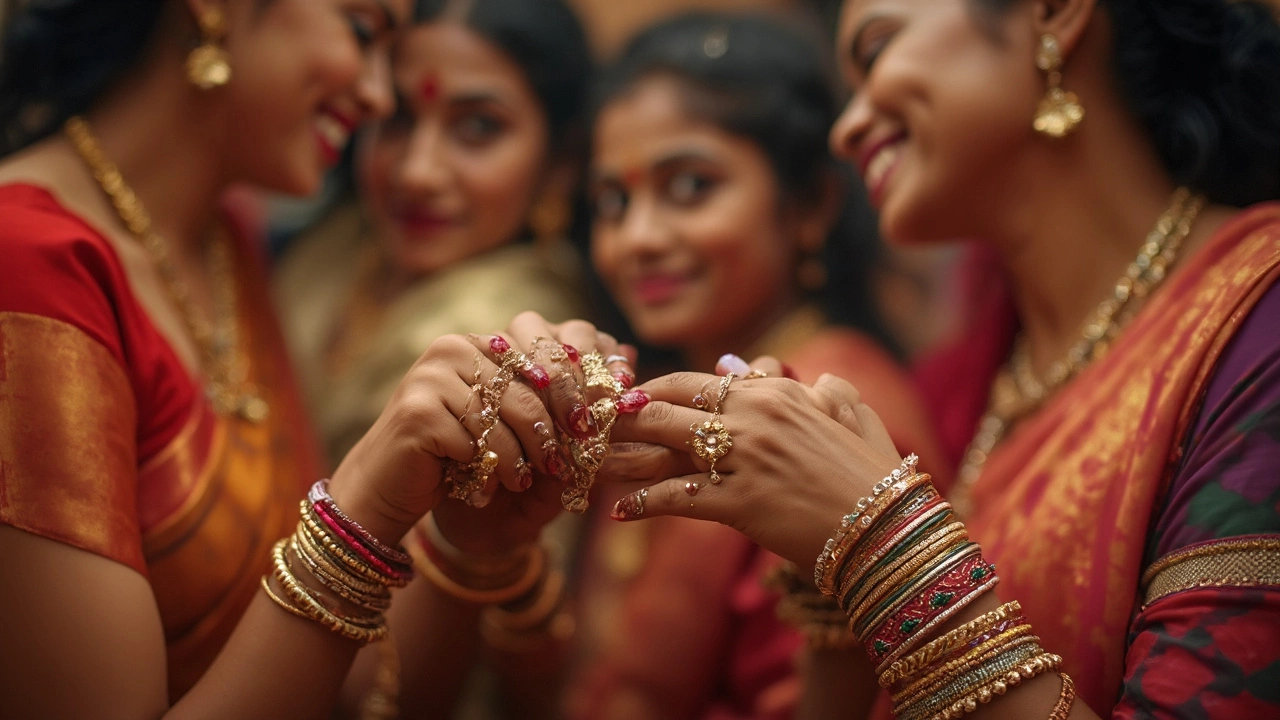
Market Tricks, Global Trends, and Buying Bangles Smart
This is where things get sneaky. Even if raw materials stay stable, the way bangles are sold (and hyped) can mess with prices big-time. During major festivals—Diwali, Akshaya Tritiya, Eid—jewelry stores unroll ‘discounts’ but quietly hike their base prices first. Ever notice how ‘making charges’ climb during sales? That’s no coincidence. ‘Making charges’ aren’t just for gold; you’ll spot them for silver, platinum, and even imitation jewelry these days. The fancier the bangle, the steeper those fees. Some big-brand stores charge as much as 25% of the gold’s value just as a making charge, all wrapped up in shiny packaging and a fancy bag you might never use again.
Let’s not forget international trends. Social media is global—designs from Turkey, South Africa, or the UAE go viral in a flash. Bangles influenced by Italian filigree or Middle Eastern motifs show up in our markets six months later but at a markup. Import restrictions and shipping add to the tab, so by the time you see your favorite K-drama hero rocking a minimal gold cuff, the version you find here is already "luxury." Even lab-created stones, which should be cheaper, end up bundled in with designer tags and heavy marketing. Some brands straight-up sell you the story more than the bangle.
So, how do you shop smart? First, always ask to see the breakdown of materials and making charges. It’s your right—don’t let salespeople dodge the details. Compare rates at different stores, especially small traditional shops versus global chains. The artisan-run outlets sometimes skip big-brand overhead, passing the savings to you. For glass or lac bangles, local markets are better than malls, where rents inflate costs. If you’re after precious stones, check for certifications and weigh them separately from the gold to make sure you’re not overpaying for mixed weights.
Timing matters, too. Avoid festive rushes unless you absolutely need those colors or designs—prices always spike. If you don’t mind shopping off-season, you could snag the same set for much less. I once bought Dhruv a set of simple silver kadas in the dull monsoon months and paid nearly 30% less than the previous winter’s rates. Stack up loyalty points at trusted shops and sign up for sale alerts, but don’t fall for discounts hiding price hikes in other parts of the bill. And sometimes, going for a classic, sturdy design means you’ll have something to hand down—good value through generations rather than just following trends that fade as quickly as Dhruv’s latest cricket phase.
Here’s one more tip that’s helped my family: involve the kids, let them see how much care goes into choosing these pieces. Bangles aren’t just expensive because of what they're made of. Their real value lies in stories, history, and shared rituals, from sitting on the shop’s rickety stool with your daughter to passing on your own grandmother’s set. When you see a price tag, remember—what you’re buying is bigger than a bit of metal. And who knows, a small bangle today might be the next treasured heirloom in your family box someday.
